Why Won’t My TV Connect to My Mobile Hotspot? 6 Troubleshooting Tips
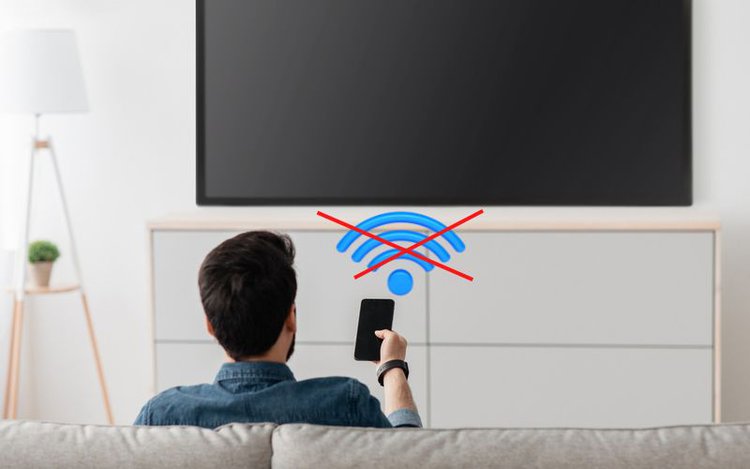
- Ensure the correct password is entered for the mobile hotspot; incorrect password entry prevents your TV from connecting.
- Verify that the cellular signal is strong enough and that there is sufficient data allowance in your plan to support hotspot connectivity.
- Disable any battery-saver functions on your phone, confirm there are no carrier restrictions on hotspot usage, and ensure your smart TV supports hotspots.
Connecting your smart TV to a mobile hotspot shouldn’t be a headache.
This guide will address common issues like weak signals and compatibility hiccups, ensuring your TV and hotspot play nice together.
Quick Navigation
1. You’ve Entered the Wrong Password
If your mobile hotspot is password protected, you must correctly enter the password in order to use its network. So, if you’ve incorrectly entered the password, your TV will not connect to your mobile hotspot.
Some TV models will inform you that you’ve entered the wrong password or tell you that the connection has been unsuccessful, while others will simply bring you back to the list of available networks.
There are two solutions you can try if you suspect you’ve entered the wrong password: verify your hotspot’s password before entering it correctly or remove your hotspot’s password entirely.
Please note that the second solution is only available on certain Android phones.
Solution 1: View the Hotspot’s Password
Let’s learn how to view your hotspot’s password on both iOS and Android devices.
You may also change your phone’s hotspot password through the Hotspot settings.
iOS
Step 1: Go to your iPhone’s Settings app.
Step 2: Click on the Personal Hotspot tab.
Step 3: Notice the hotspot’s password, found right under Allow Others to Join toggle button and next to Wi-Fi Password (shown below).
You can also change your hotspot password by tapping the Wi-Fi Password option, entering your new password, and clicking Done.
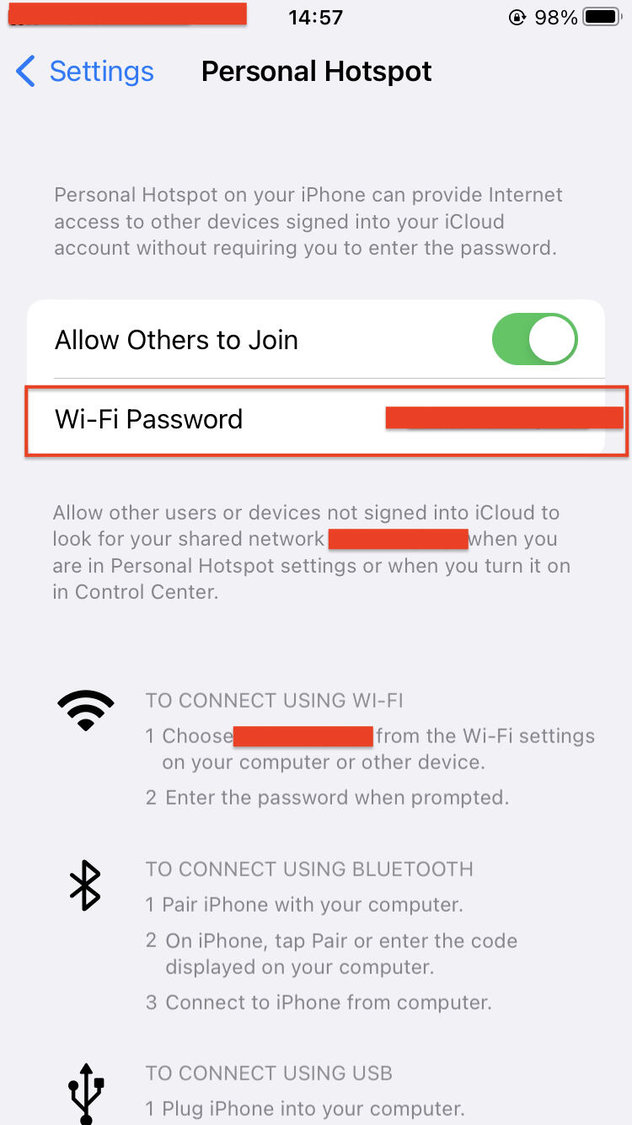
Android
Step 1: Head to your Android phone’s Settings app.
Step 2: Tap the Connections option.
Step 3: Select Mobile Hotspot and Tethering.
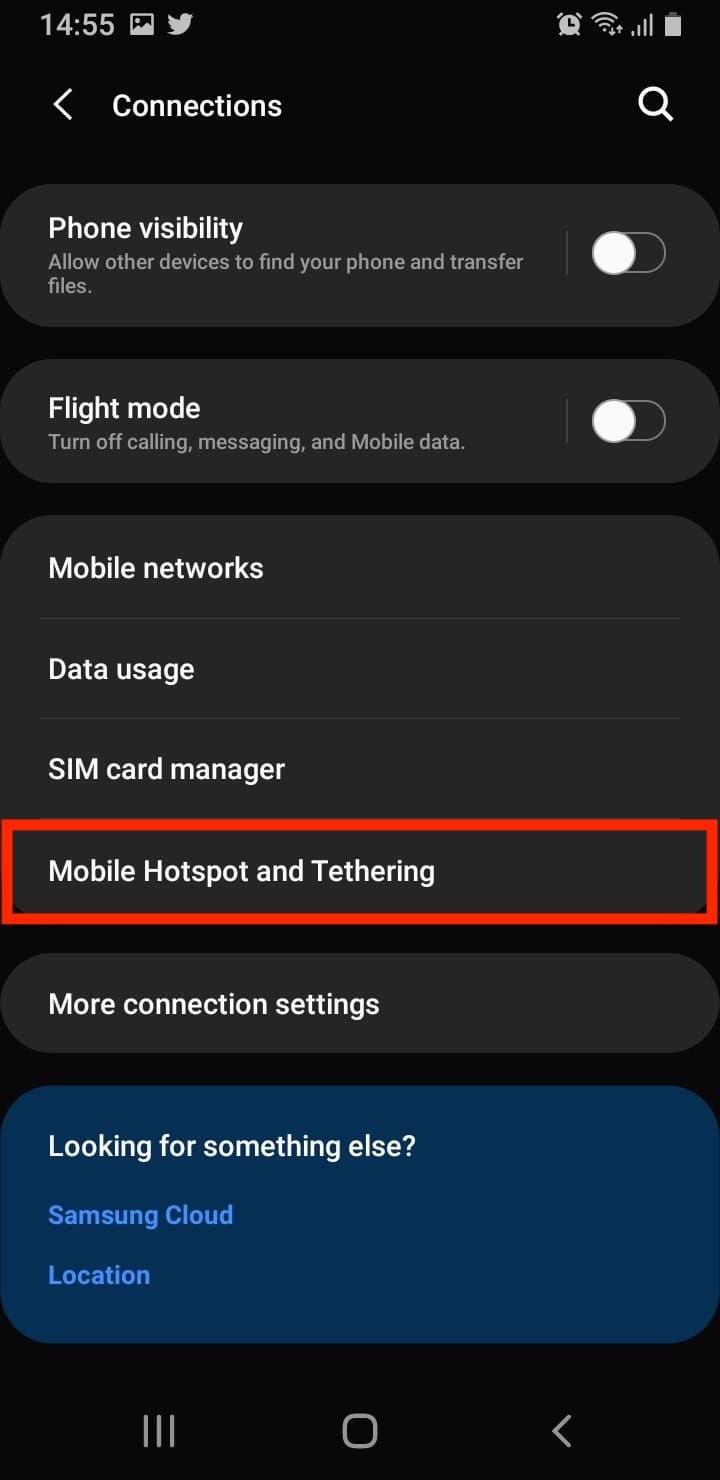
Step 4: Ensure that Mobile Hotspot is toggled on. Then, tap Mobile Hotspot.
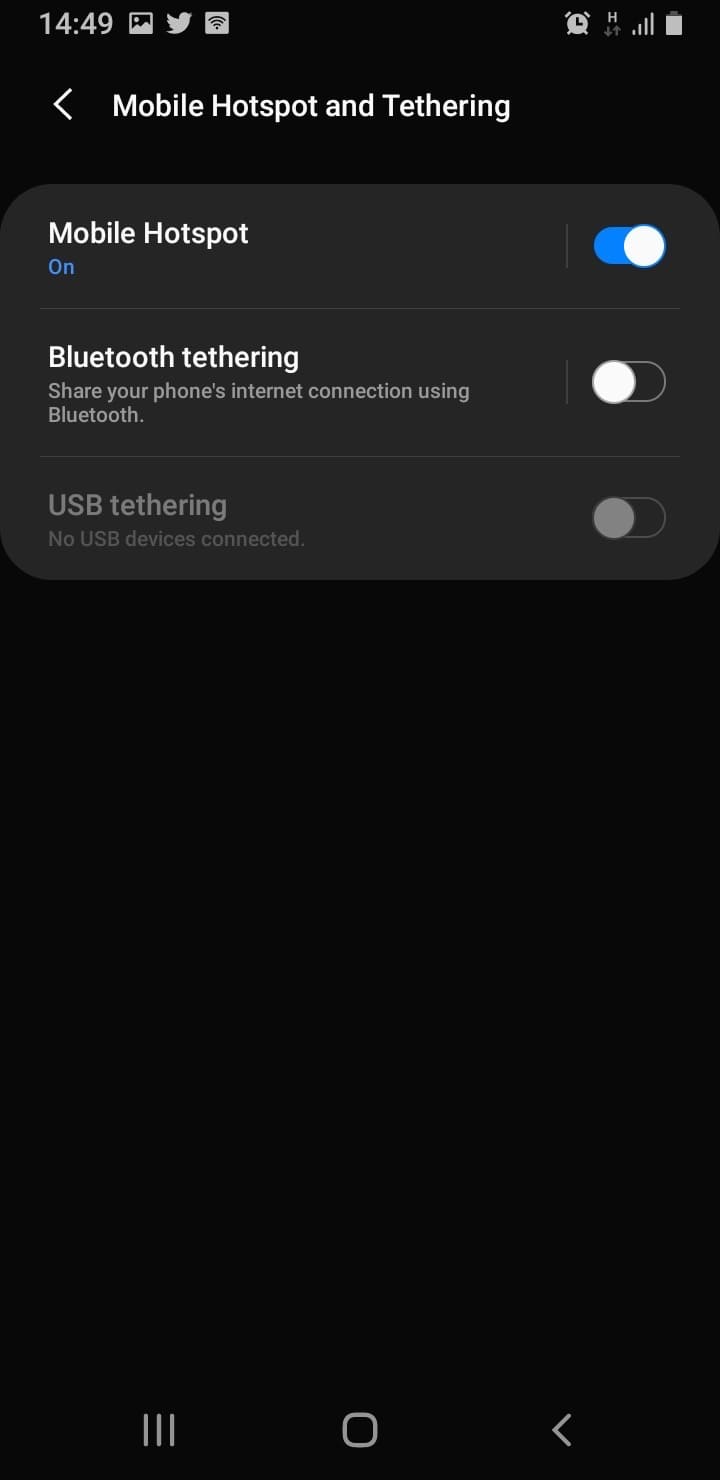
Step 5: You’ll find your phone’s password in the Password tab. Enter this password into your TV’s network settings, ensuring you use caps lock when needed.
Note: Unlike iPhones, Android phones are not standardized, meaning their settings may vary. The steps outlined above are for Samsung Android phones.
If you can’t find your Android phone’s Hotspot settings, use the search feature in the Settings app if possible.
Solution 2: Remove the Password
If you’re struggling to enter your phone’s hotspot password on your smart TV, you have the option of removing it.
Please note that this option is only available on select Android phones.
We also strongly recommend against this solution as it will allow anyone near you to connect to your hotspot. This can pose a grave cybersecurity risk, as hackers could use this opportunity to access your device’s personal information.
Not to mention, the additional users will drain your phone’s mobile data.
If you’re willing to accept these risks, you can remove your phone’s hotspot password by following the steps below.
Step 1: Head to the Settings app on your Android phone.
Step 2: Tap the search bar on the top of your screen and enter the word “Hotspot” followed by the enter key. Then, select Portable hotspot.
Step 3: Click on Set up portable hotspot.
Step 4: Head to Security and change it to None. Then, tap the Check (✓) icon in the top-right corner to save your changes.
Step 5: Now, you may connect your TV to your Android phone’s mobile hotspot by simply selecting the hotspot’s name from the list of available devices.
If you’re a visual learner, watch the video below demonstrating how to remote an Android phone’s hotspot.
Note: Since removing your hotspot password will make your device vulnerable to cybersecurity attacks, we strongly recommend disabling your hotspot when not in use.
2. The Cellular Signal is Weak
Your phone’s cellular signal may be too weak to support your hotspot.
One symptom of a weak cellular signal can be a Connected, No Internet message in your TV’s network settings since although your TV has joined the hotspot, it cannot use its network.
You may even find that your phone’s hotspot cannot be enabled if its cellular signal is weak.
It’s also a good idea to check your phone’s signal bar found in the top-left corner of the screen.
If there are only one or two of them, or a No Signal message there, your phone’s signal could be too weak to support a hotspot.

Before you start searching for a better signal, try restarting your phone. This will help to reestablish a connection with the cell tower.
If your cell service is still weak once your phone has fully restarted, it’s time to start searching for a location with a better signal.
Move away from any thick walls, metal, and microwaves since these objects can absorb block cell service. You may want to try moving toward an open window to see if that helps.
Bear in mind that you must remain close enough to your TV for it to discover and connect to your device’s hotspot.
Crowded areas (e.g. packed apartment buildings or central neighborhoods) where large groups of people are simultaneously using their smartphone’s cellular data can also inhibit signal.
So, if you’re in a crowded area, try stepping away from the crowd to see if that helps.
Severe weather conditions such as rain and snow storms can also hinder cell signals, so if you’re in the middle of a nasty storm you may have to wait until it’s subsided before you can use your hotspot.
3. Your Data Plan has Finished
If you have a limited data plan, it’s possible that your data allowance has finished. Hotspots can quickly drain your cell data, especially if you’re using them to stream high-definition content over long periods.
Many phone carriers offer apps that allow you to track how much of your monthly data plan you’ve used. Others have toll-free phone numbers you can call that will play a message summarizing your data plan usage.
So, if possible, check how much of your data allowance is left.
Bear in mind that you will not be able to access the internet if you’ve used up all of your data.
Tip: To minimize your TV’s data usage, try reducing the screen’s maximum resolution. If you’re unsure of how to do this on your TV, consult its user manual or customer care for additional guidance.
4. The Battery-Saver Function has been Enabled
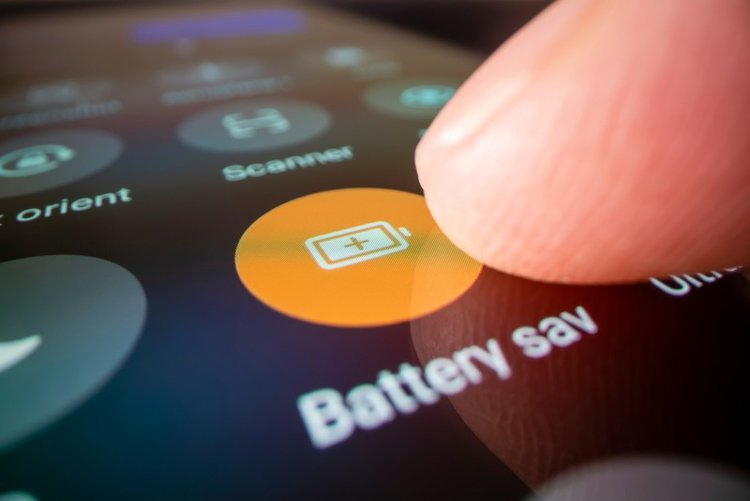
Mobile hotspots tend to drain your phone’s battery. You may even notice that your phone heats up when you’ve had the hotspot turned on for a while due to the excess power the battery is exerting.
Your phone’s battery-saver function seeks to prolong battery life by limiting certain functions. In some cases, the battery-saver function could hinder your phone’s mobile hotspot, preventing it from working properly.
This may prevent other devices, like your TV, from connecting to your hotspot.
If you suspect your phone’s battery-saver is preventing your hotspot from working, you must disable it.
You can disable your iPhone’s battery saver by tapping the battery icon in the control center.
If you can’t find the battery-saver function in your Android phone’s control center, you may need to disable it through the settings. If you’re having trouble finding this feature, search for “Battery” in your phone’s Settings app.
Once this feature has been disabled, try reconnecting your TV to your hotspot.
5. The Carrier is Blocking Your Phone’s Hotspot Feature
Certain phone carriers (e.g. AT&T, Verizon, T-Mobile, etc.) only allow users with premium data plans to access the hotspot feature.
So, if you have a cheaper data plan, you may not be able to use your phone’s hotspot.
Unfortunately, the only solution here is to change your data plan or phone carrier. Contact your phone carrier’s customer care for more information about this process.
In the meantime, you may have to find another way to connect your TV to the internet.
You may also want to consider connecting your phone to your TV via an HDMI cable.
iPhone users can connect their phone to their TV using an Apple Lightning to Digital AV Adapter.
- Use the Lightning Digital AV Adapter with your iPhone, iPad, or iPod with Lightning connector.
- The Lightning Digital AV Adapter supports mirroring of what is displayed on your device screen —...
- It also outputs video content — movies, TV shows, captured video — to your big screen in up to...
(Paid Link.)
Android users can also find compatible adapters that plug into their phone’s charging ports, such as a Micro USB to HDMI Cable Adapter or a USB-C to HDMI Adapter .
However, only MHL-compatible Android phones can output video via HDMI. To find out if your Android phone is MHL-compatible, consult the MHL Checker app.
Since none of the adapters mentioned above include HDMI cables, you will need to purchase one separately if you don’t already own one.
This is a great alternative to connecting your TV to a hotspot since you’ll be able to mirror your phone’s screen even if your TV is offline.
Note: Android phones’ ports vary widely, so please ensure you’re purchasing an adapter that’s compatible with your phone. If you’re unsure which port your phone has, consult the user manual or the manufacturer’s official website.
6. Your Smart TV Does Not Support Hotspots
Some older smart TVs may not support hotspots.
Users in a 2013 Microsoft forum found this to be true when many of them could not connect their smart TVs to their laptop hotspots. When they reached out to Samsung Support, they were told that Samsung smart TVs do not support hotspot connections.
It should be said that this forum is almost a decade old, so newer Samsung smart TVs may support hotspot connections.
However, if you own an older smart TV model, you may want to reach out to the manufacturer’s customer care to verify if your TV can connect to mobile hotspots.
Please ensure you have tried all of the above solutions before considering this option, as it’s not uncommon for hotspots to malfunction.
Best of luck!
Yesenia Achlim is a technical copywriter and editor with a focus on AV equipment. She aims to break down complicated topics and make technology accessible, no matter your technical expertise. When she’s not teaching you how to replace a projector lamp, you can find her reading and baking.



My TV does not prompt me for my password anymore